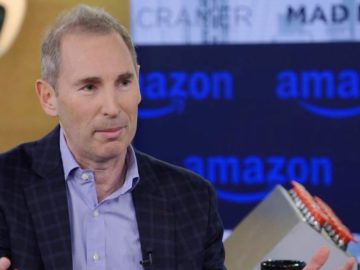For value-added resellers in the accounting software space this year, all roads lead to the cloud. The members of the 2024 VAR 100 have identified many changing needs among their clients over the past year that fit a wide variety of emerging technology trends, but one thing they all have in common is the need for cloud connectivity. This indicates that the mass migration to cloud is continuing apace, showing no signs of slowing down anytime soon.
Part of the motivation behind this trend has been the simple need to keep up. Several VARs, such as Florida-based Enavate, noted that certain popular solutions are phasing out support, which lent new urgency to clients’ rethinking their current tech stack, especially where it concerns ERP systems. “The biggest change we have seen in our clients over the last year has been an increased sense of urgency in determining their path forward with legacy ERP solutions such as Dynamics GP, SL and NAV. Dynamics SL was officially sunset in January 2024 and industry studies have shown that there is a great deal of confusion on the part of Dynamics GP users as to what the future holds for their system,” said Julie Stankey, marketing specialist with Enavate.
Alta Vista, based out of Michigan, reported similar anxiety among its customers, saying they are beginning to wake up to how fast a product can lose support. “Businesses on legacy systems seem to now understand that their software will lose support quicker than they may have previously thought,” said marketing director Greg Montique.
(See this year’s VAR 100 list.)
Sometimes the changes were driven by broader changes in the landscape, such as the mass migration to remote work, according to firms like South Carolina-based Kopis. “Over the last year we’ve seen a big shift towards modernizing on-premise ERP systems to cloud-first deployments with remote accessibility to perform work. Within the application itself, full accounts payable lifecycle automation is in high demand both for the efficiency in the workflow as well as efficiency in the disbursement process,” said director of marketing Britany Carter.
This speaks to a point made by Rebecca Easton, marketing specialist with Pennsylvania-based Cargas: Customers are not looking for new products for their own sake but to address specific problems. “Our customers are less product-focused and more solution-focused, meaning they care more about alleviating pain points than investing in new software. … In addition, our customers require more time than ever to make crucial business decisions such as investing in new software,” said Easton.
Help wanted
One pain point mentioned by several VARs was the ongoing talent shortage. Technology has long been touted as a way to mitigate some of the worst impacts, utilizing tools like robotic process automation or artificial intelligence. This tech, though, almost always requires cloud connectivity, driving demand even higher.
“Our clients continue to struggle to find the talent they need to run their business and to apply technology to improve their business,” said Terri Andrews, reputation and brand management leader with Top 10 Firm RSM US. “Clients have continued to ask us to advise on and implement [human capital management] systems to better recruit and retain employees. However, clients are increasingly seeking to outsource noncore activities to focus their staff on the core business. This includes outsourcing of accounting system support, and sometimes outsourcing of the entire accounting, payroll, HR, and/or IT functions. We also see clients retaining our teams for continuous development and improvement of their ERP and CRM systems, rather than engaging for single projects.”
Other clients are responding to changing economic conditions, especially with regard to tight budgets and rising costs. Automation and similar measures are seen not only as a way to shore up weaknesses but to save money, according to California-based Top 100 Firm BPM.
“Our clients are carefully evaluating investments in new technology due to tighter budgets and costs. Many are focusing on optimization projects to gain more automation and efficiency from their existing systems like NetSuite, Intacct and Salesforce. Clients are looking to leverage built-in AI capabilities where possible to increase operational efficiency. The emphasis today is on using current technologies better, rather than investing in new systems,” said Bryan Rhody, partner for ERP services at BPM.
With this increasing cloud usage comes increasing cybersecurity risk. As a result, many VARs have witnessed rising demand for cybersecurity solutions too. “One of the major trends we are observing is the increasing importance of cybersecurity, particularly in the face of growing threats such as ransomware attacks. The threat of ransomware shouldn’t be understated, and as we’ve all seen in the news, it’s affecting every industry,” said Meagan Forbes, content marketing manager with North Carolina-based Sunrise Technologies.
AI everywhere
Nearly every single member of this year’s VAR 100 mentioned another type of largely cloud-based solution that has been taking the accounting world by storm: AI. VARs both big and small reported rising artificial intelligence usage both for themselves and for their clients, who often clamor for these solutions themselves.
“We are convinced that artificial intelligence will define our future,” said Brynn Forest, director of global corporate marketing at New York City-based HSO. “It will impact every industry, every process, every function and every employee, independent of the role. In view of our mission, we define AI as the next transformative technology that we can leverage.”
British Columbia’s The Answer Company sees AI as having a similar significant impact, according to senior manager of product marketing and strategic alliances Sharon Lee: “AI has transformed the way we operate and support our customers. … [And] for our clients, we’ve noticed a shift in attitudes toward AI adoption in recent years. Finance leaders, such as CFOs, are now spearheading discussions to promote AI’s versatility and diverse applications, ranging from reporting to error detection and analysis.”
Some VARs, like Armanino, are also using AI to expand the kinds of services they offer and the scale at which they can offer them, according to senior brand associate Brittany Schulze, who added that AI has been deeply woven into the California-based Top 25 Firm. “AI has notably become an integral part of our business, helping us to harness the benefits of increased efficiency and accuracy. We’ve incorporated innovative AI-driven solutions into Armanino’s IP — such as our AI-enabled 13-Week Cash Flow Forecast and Audit Ally that leverage cutting-edge technology for better decision-making. Further, we’ve deepened our services to our clients through Microsoft Azure and CoPilot. Our strategy and transformation team is assisting clients every week with assessing their needs and use of AI and related technologies, helping drive roadmaps to ensure our clients achieve their North Star,” said Schulze.
At the same time, Tennessee-based WebSan Solutions said that its own customers are not blindly hopping onto the hype train when it comes to AI. Marketing manager Natalie Williams noted instead that they seem to be taking a pragmatic approach, embracing it only where there is a clear benefit.
“Over the last year, we’ve seen a shift in our clients’ needs,” she said. “They’re increasingly focused on measurable results. Businesses are demanding a clear return on investment from their technology investments. This means they want to see concrete evidence that AI in Business Central will translate to increased efficiency, profitability and sales. … With competition getting tougher, companies are actively seeking ways to differentiate themselves. This highlights the importance of AI as a potential advantage. Our focus on promoting the AI capabilities of Business Central aligns well with this need. In essence, clients are demanding more than just features; they want solutions that demonstrably improve their bottom line and give them a leg up on the competition.”
Competitive pressures
WebSan wasn’t the only company to mention rising competitive pressures. David Smooha, CEO of New York State-based Business Solution Partners, pointed out that this applies not just to clients but to VARs like his own too.
“The VAR business is increasingly competitive from other partners as well as the vendors that we work with,” he said. “The single most strategic investment BSP is making is to verticalize our offerings and services to provide a unique offering to the customer over others.”
This has also led to a noted rise in M&A activity by VARs, such as the acquisition of CompuData by CBIZ in March, which led to the creation of Philadelphia-based CBIZ CompuData. “Over the past two years we have seen a lot of our customers grow by acquisition. This past year we have seen those customers focus on streamlining and optimizing their business operations through automation technology,” said senior director of marketing Michelle Atwood.
This, in turn, has led to changing client demands in the face of rising M&A activity.
“With the merger and acquisition activity in the CPA firm industry (PracticePro 365’s primary market), increasingly, clients are looking for a practice management platform that reduces the number of disparate programs and scales as their practice grows,” said Julie Weil, marketing director for Florida’s PracticePro.
Other trends
While it might be hard to believe, not everything was about cloud, AI and automation this year. Megan Clinton, senior marketing specialist at Milwaukee’s Wipfli, said her Top 25 Firm’s own clients have been demonstrating “change fatigue,” and so are concentrating more on easier-to-implement offerings that don’t require their companies to launch a major new initiative.
“Our experience and research points to a significant amount of ‘change fatigue’ that our clients have experienced over the past two to three years. All organizations have had to adopt new ways of serving their customers, clients and constituents. This last year we have seen many organizations looking for a break — a pause in big initiatives. What that has meant for our business is that we have adjusted our service offerings so that they are easier to consume for our clients, while still making a positive impact,” said Clinton.
Meanwhile Illinois-based Solution Systems has observed that many clients are not being served well by their current partners, and is seeking to capitalize on this, said vice president of growth Keith Petersen. “We’re seeing a large number of opportunities come from clients who aren’t happy with the level of service they are receiving from their current partner,” he said. “We’re investing a lot in customer success and enhanced support offerings so we are positioned to meet these needs. Additionally, we’re investing in building out proprietary apps that deliver additional value and adjacent offerings in IT that allow clients to consolidate partners/spend.”
What this all tells us is that the profession’s digital revolution is far from over. In fact, with technology advancing at breakneck speed alongside client needs and demands, it is easy to see that it has only just begun.




![Elon Musk Sparks AI Debate With Viral Kamala Harris Deepfake Video [Watch] Elon Musk Sparks AI Debate With Viral Kamala Harris Deepfake Video [Watch]](https://virtual-coach.com/wp-content/uploads/2024/07/elon-musk-kamala-harris-360x270.png)